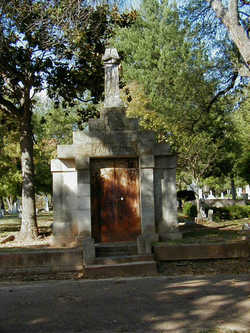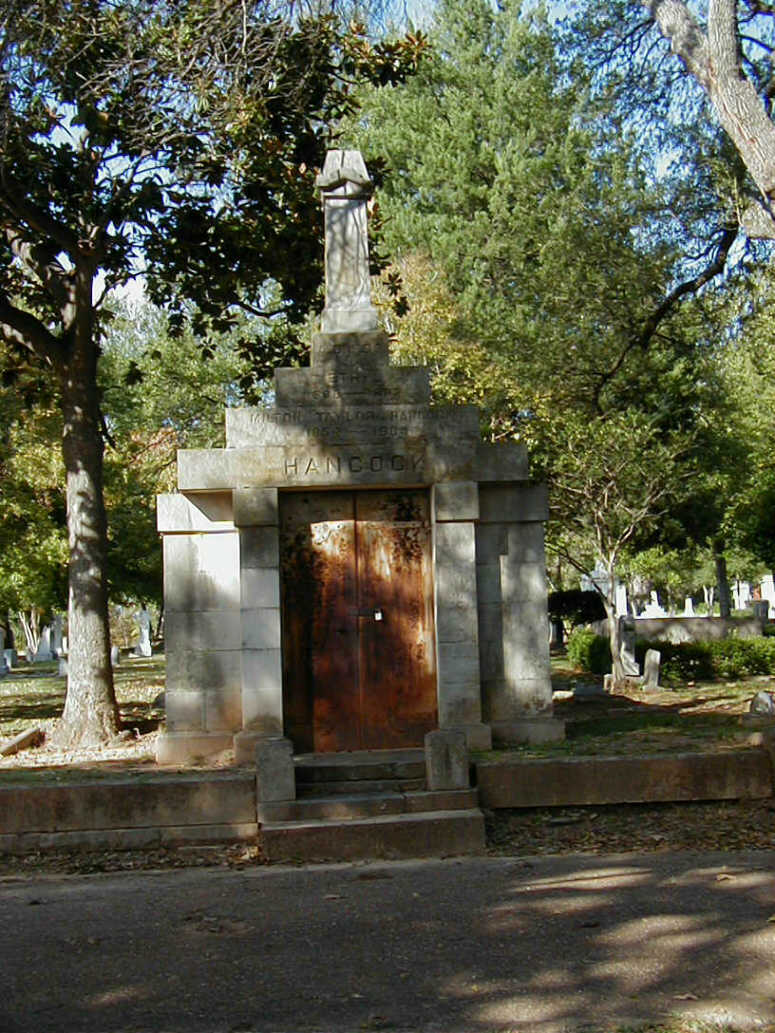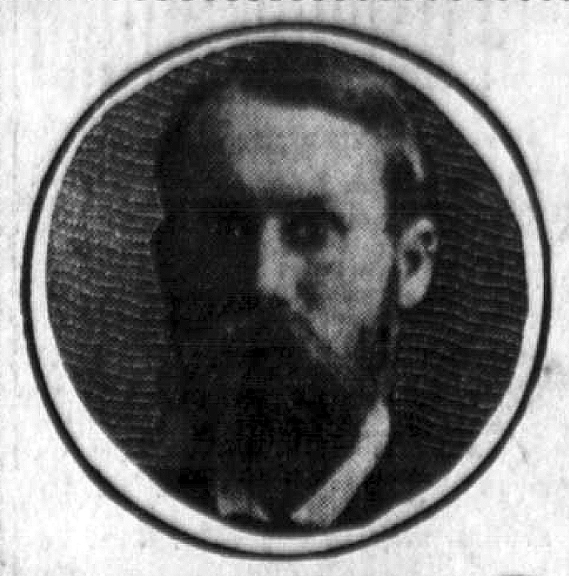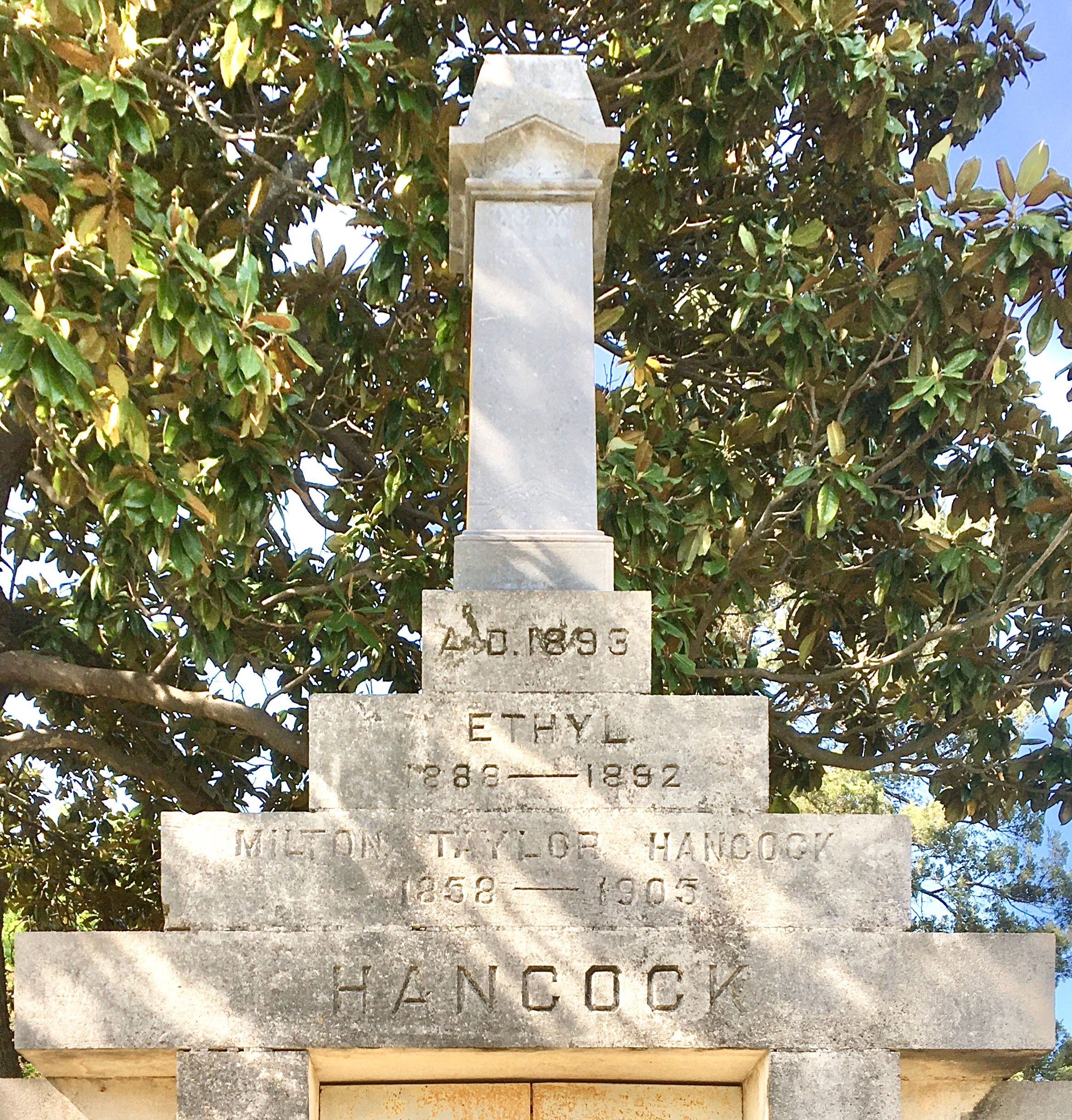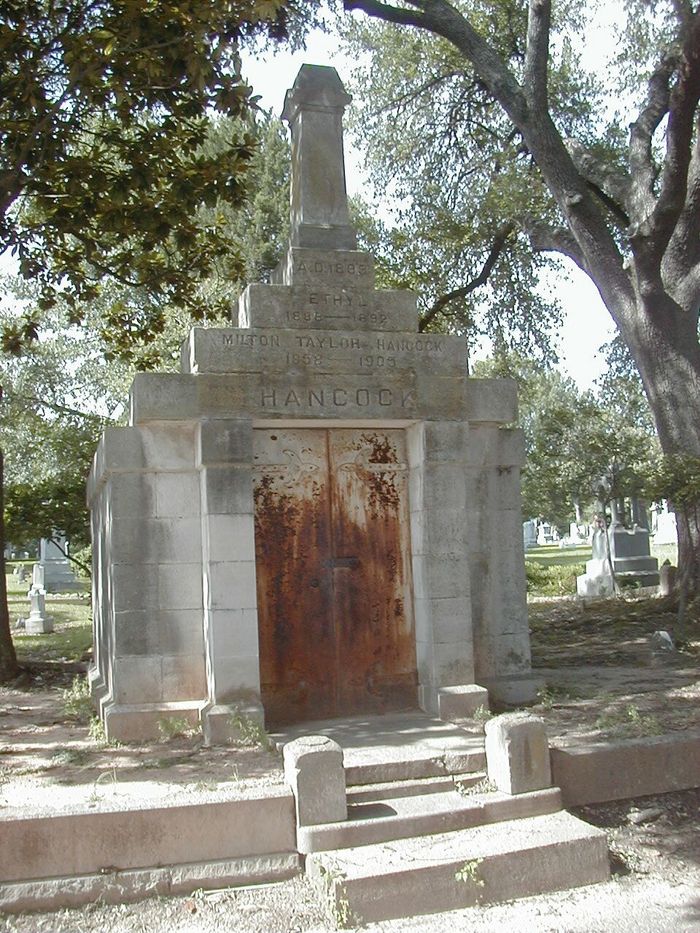It is clear that Hancock and Nina Little cohabited before their marriage, as a little math involving the ages of their daughters suggests. A sketch of Hancock in a Caddo Parish web site states that "in 1892 Hancock and his wife, Nina, saw the death of their four-year-old daughter, Ethyl. She was buried in a cast-iron coffin that was placed in the tomb. Inside the tomb was a chair, which Nina would sit in each evening when she visited Ethyl and read her bedtime stories. In 1903 they lost their 24-year-old daughter, Irene, who also may lie buried in the vault. The Hancocks moved to Los Angeles, California with their son, Milton Hancock, Jr., who was their only surviving child. On June 29, 1905 sixteen-year-old Milton, Jr. was serving as chauffeur for his father in their automobile, which was still a new invention. A dairy wagon that ran in front of the car was struck and Hancock was thrown from the car window and dragged 125 feet to his death in one of the first automobile wrecks in the country. He was buried in the vault with his two daughters; his wife and son never moved back to Shreveport."
The date of the accident, per the Los Angeles papers, was July 20, 1905, and reports squarely lay the blame for the accident on the 16-year-old son, who was speeding and unlicensed. Burial accounts in Shreveport suggest he was buried in the tomb a year to the day after his accident!
This researcher also known from personal observation, having entered and helped maintain the Hancock tomb, that there is one badly damaged adult cast iron casket with a wooden casing, apparently Milton Taylor Hancock's, and another smaller cast iron casket with a clouded glass viewing port, in much better condition with its wooden casing largely intact. There have been at least two other adult burials in the vault over time, though those remains later were removed. So either Milton Taylor Hancock is no longer there and the two girls are entombed, or one of the girls, likely Irene, is missing.
Adding to the mystery is a contemporary California newspaper account that identifies the widow Nina Hancock as Hancock-Michelson, suggesting she remarried, even though her death certificate from California does not reflect this, and that she and Milton Taylor Hancock had at least two other children. The same report states that he was a strong believer in spiritualism and had the tomb built in the yard of his mansion in Shreveport originally, but later became greatly disillusioned and had the tomb moved to Greenwood Cemetery where it remains today. This answers the mystery as to why the date chiseled into the tomb predates Greenwood by several years.
Hancock made numerous claims of nativity and residence over the years as evidence by his and Nina's court filings, and the historic trail on him is cloudy. Any information on him and his life is greatly appreciated.
It is clear that Hancock and Nina Little cohabited before their marriage, as a little math involving the ages of their daughters suggests. A sketch of Hancock in a Caddo Parish web site states that "in 1892 Hancock and his wife, Nina, saw the death of their four-year-old daughter, Ethyl. She was buried in a cast-iron coffin that was placed in the tomb. Inside the tomb was a chair, which Nina would sit in each evening when she visited Ethyl and read her bedtime stories. In 1903 they lost their 24-year-old daughter, Irene, who also may lie buried in the vault. The Hancocks moved to Los Angeles, California with their son, Milton Hancock, Jr., who was their only surviving child. On June 29, 1905 sixteen-year-old Milton, Jr. was serving as chauffeur for his father in their automobile, which was still a new invention. A dairy wagon that ran in front of the car was struck and Hancock was thrown from the car window and dragged 125 feet to his death in one of the first automobile wrecks in the country. He was buried in the vault with his two daughters; his wife and son never moved back to Shreveport."
The date of the accident, per the Los Angeles papers, was July 20, 1905, and reports squarely lay the blame for the accident on the 16-year-old son, who was speeding and unlicensed. Burial accounts in Shreveport suggest he was buried in the tomb a year to the day after his accident!
This researcher also known from personal observation, having entered and helped maintain the Hancock tomb, that there is one badly damaged adult cast iron casket with a wooden casing, apparently Milton Taylor Hancock's, and another smaller cast iron casket with a clouded glass viewing port, in much better condition with its wooden casing largely intact. There have been at least two other adult burials in the vault over time, though those remains later were removed. So either Milton Taylor Hancock is no longer there and the two girls are entombed, or one of the girls, likely Irene, is missing.
Adding to the mystery is a contemporary California newspaper account that identifies the widow Nina Hancock as Hancock-Michelson, suggesting she remarried, even though her death certificate from California does not reflect this, and that she and Milton Taylor Hancock had at least two other children. The same report states that he was a strong believer in spiritualism and had the tomb built in the yard of his mansion in Shreveport originally, but later became greatly disillusioned and had the tomb moved to Greenwood Cemetery where it remains today. This answers the mystery as to why the date chiseled into the tomb predates Greenwood by several years.
Hancock made numerous claims of nativity and residence over the years as evidence by his and Nina's court filings, and the historic trail on him is cloudy. Any information on him and his life is greatly appreciated.
